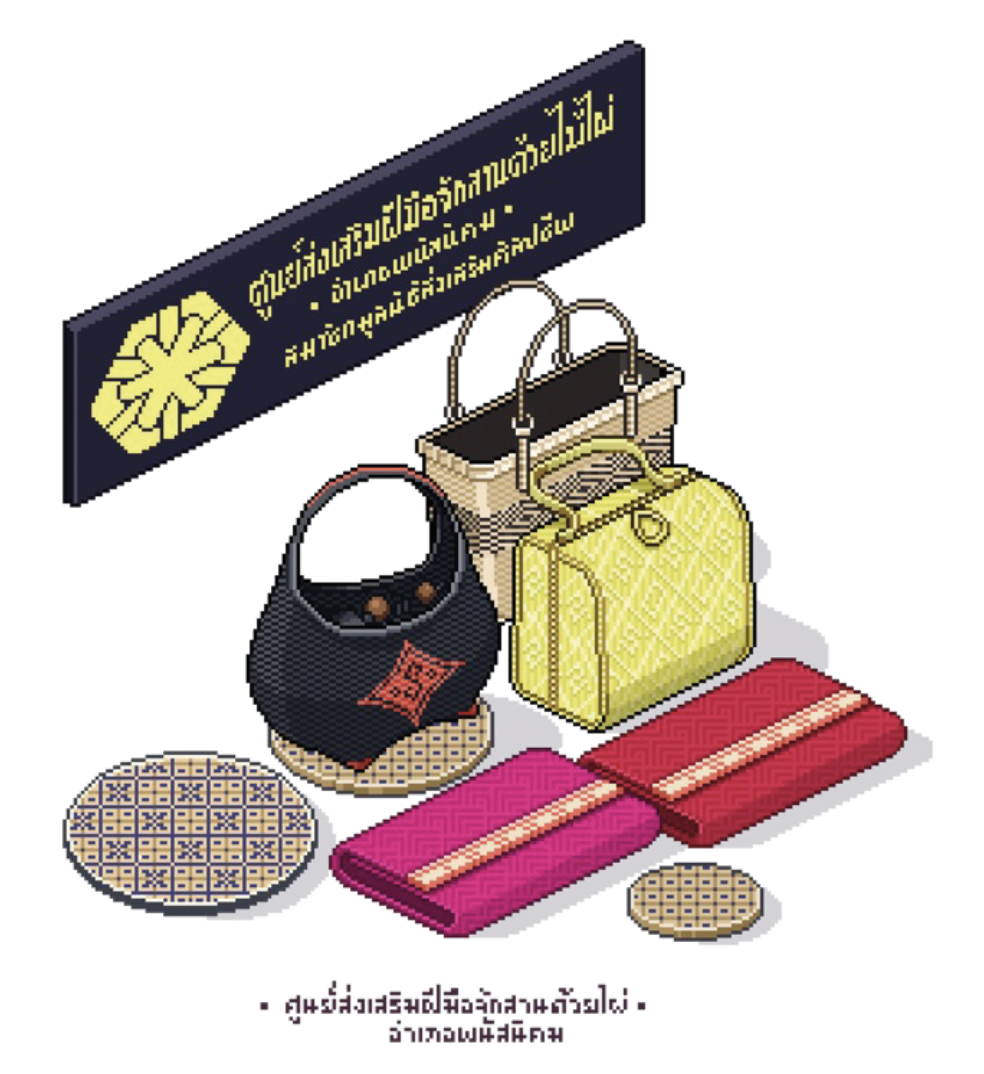The State of Memory Towards the Aesthetic Perception of Pixel Art in the Context of the Identity of Phanat Nikhom Community, Chonburi Province
DOI:
https://doi.org/10.69598/decorativeartsjournal.4.10-33Keywords:
Pixel art, cultural memory, aesthetic perception, identityAbstract
In the digital era where technology permeates all aspects of society, art and design practices have been profoundly influenced by these transformations. Pixel art, with its simple grid structure capable of conveying deep cultural contexts, has emerged as a digital art form well-suited for cultural heritage preservation in contemporary formats. Phanat Nikhom Community in Chonburi Province is rich in cultural identity—especially known for bamboo weaving crafts and local traditions—yet faces challenges from modern societal changes. This research aims to analyze and develop pixel art designs that integrate motifs and narratives reflecting the identity of Phanat Nikhom, in order to bridge the past and present through modern creative works. The methodology involved collecting historical and cultural information of the community via document research, interviews, and field surveys. The design process included planning and sketching pixel art compositions by selecting key identity elements of the community, determining appropriate visual perspectives and composition, choosing color palettes that reflect the local atmosphere, and then creating the pixel art works using graphic software. The works were exhibited to an audience and feedback was gathered. Results indicate that the developed pixel art effectively conveys the community’s cultural identity and heritage; viewers could perceive the beauty and value of traditional patterns through a contemporary digital medium and felt a sense of nostalgia alongside a fresh appreciation for the art. Furthermore, the experimentation suggests that factors such as pixel grid resolution and color tone influence aesthetic perception: for instance, pieces with larger grids reveal grand and clear details, whereas smaller grids create a more intimate and personal ambiance. Discussion of the work reveals that integrating the concept of cultural memory with design attentive to aesthetic perception endows the creations with richness in both content and emotional resonance. In conclusion, this pixel art design approach that embodies cultural memory and community identity has proven to be a powerful means of preserving and enhancing the value of local cultural heritage in the digital age. It also demonstrates potential for application in other design contexts—such as cultural product design, place identity branding, or cultural tourism media—to further amplify the value of local wisdom and heritage on a broader scale.
References
Assmann, J. (2011). Cultural memory and early civilization : Writing, remembrance, and political imagination. Cambridge University Press.
Azzi, M. (2017). Pixel Logic : Pixel art tutorial. n.p.
Goldstein, E. B. (2014). Cognitive psychology : Connecting mind, research, and everyday experience. Wadsworth Publishing.
Kant, I. (2007). Critique of judgement (J. H. Bernard, Trans.). Oxford University Press. (Original work published 1790)
Locher, P., Overbeeke, K., & Wensveen, S. (2010). Aesthetic interaction: A framework. Design Issues, 26(2), 70–79. https://doi.org/10.1162/DESI_a_00017
Sansern, R. (2020). Pixel art in creative arts and design. Art and Architecture Journal Naresuan University, 11(1), 100–115.
The Broken Column. (n.d.). The Broken Column. Retrieved April 28, 2025, from https://www.fridakahlo.org/the-broken-column.jsp.
The Persistence of Memory. (n.d.). The Persistence of Memory. Retrieved April 28, 2025, from https://www.moma.org/collection/works/79018.
The Starry Night. (n.d.). The Starry Night. Retrieved April 28, 2025, from https://www.moma.org/collection/works/79802.
Water Lilies. (n.d.). Water Lilies. Retrieved April 28, 2025, from https://www.moma.org/collection/works/80220

Downloads
Published
How to Cite
Issue
Section
Categories
License
Copyright (c) 2025 DEC Journal

This work is licensed under a Creative Commons Attribution-NonCommercial-NoDerivatives 4.0 International License.
Published by Academic Affairs Division, Faculty of Decorative Arts, Silpakorn University. The copyright of the article belongs to the article owner. Published articles represent the views of the authors. The editorial board does not necessarily agree with and is not responsible for the content of such articles.


